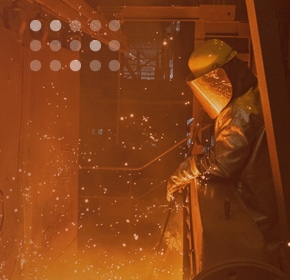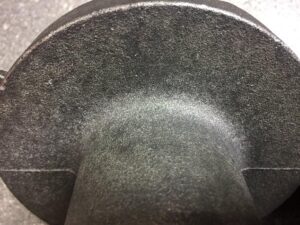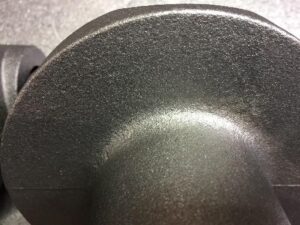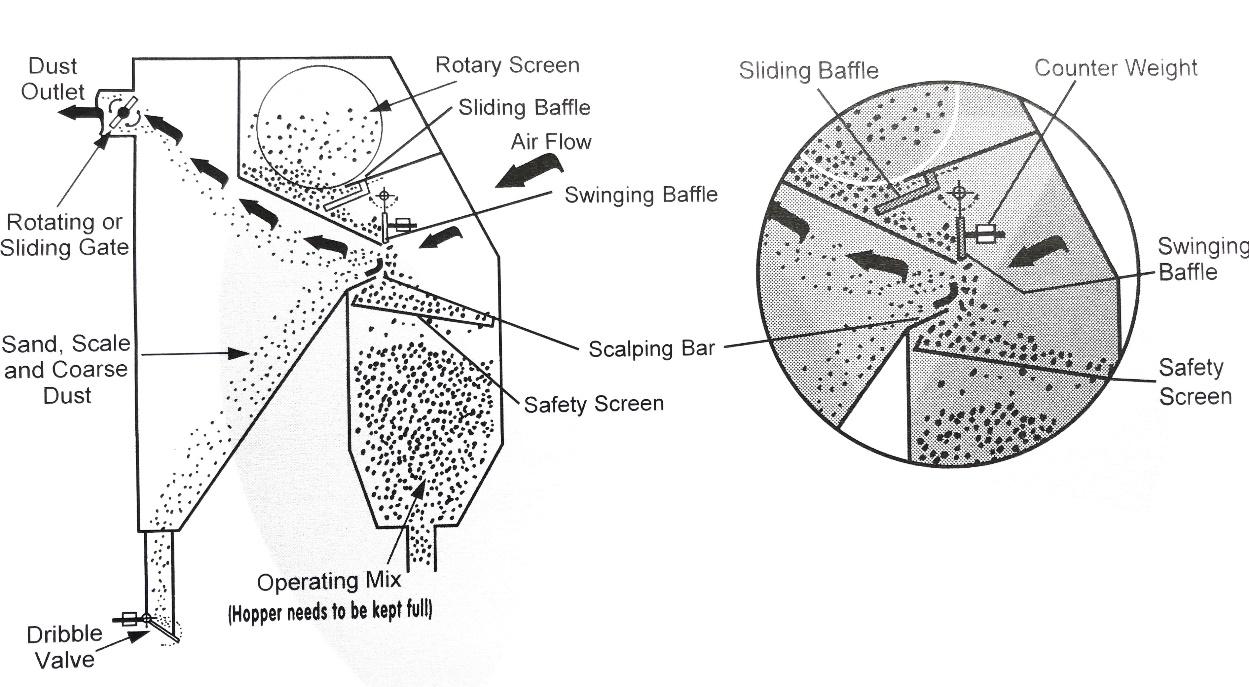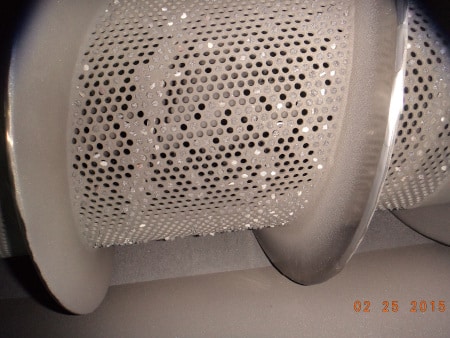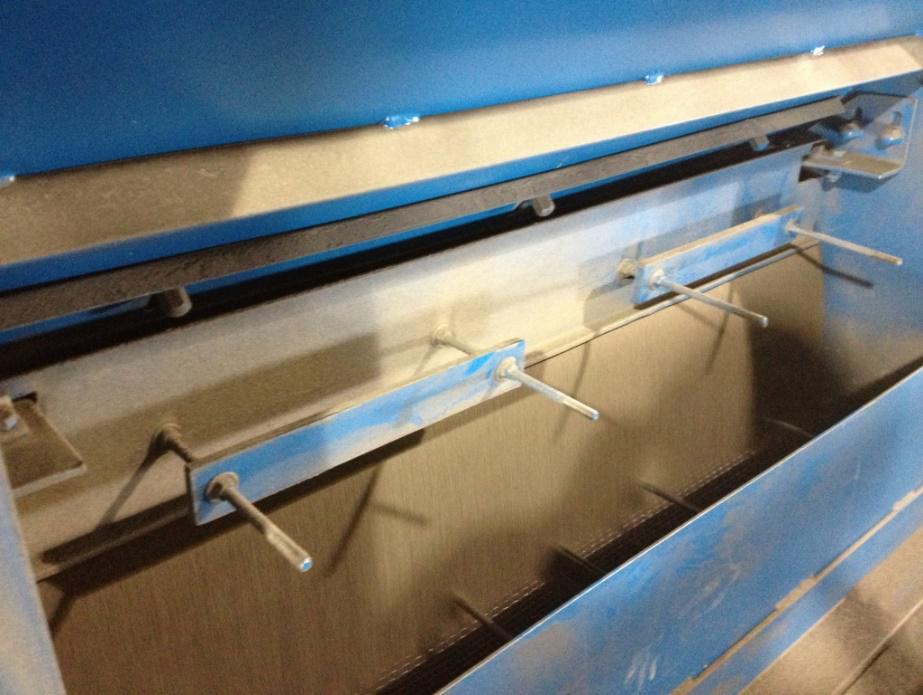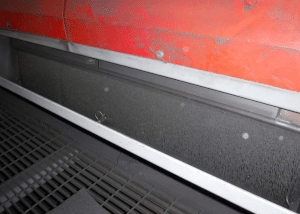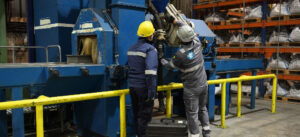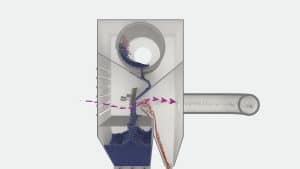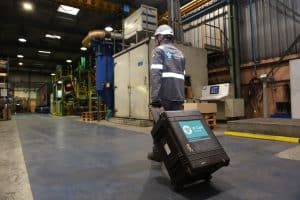Often largely ignored or diminished in its importance, the separator system is a very crucial component of the blast machine.
The crucial role
Airwash separator
Separator systems are critical components in shotblasting, from surface preparation to cleaning in foundries, ensuring operational efficiency, parts longevity and safety. Their role in separating dust and removing contaminants not only enhances surfaee quality and cleanliness, but also extends machinery life and reduces environmental impact. Understanding the key reasons for regular maintenance can help businesses optimize performance and avoid costly downtime, making it an essential practice for sustainable industrial operations.
The reasons they are looked after less are usually because they are difficult to get to, they are sometimes very high off the ground, and it’s often hot and dusty up there.
This may be, however, neglecting the separator is the perfect recipe for:
- Premature wear of the other parts of the machine
- Longer cleaning cycles
- Improper cleaning.
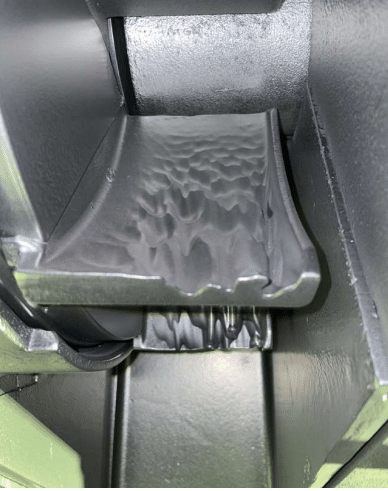
Enhancing operational efficiency with regular maintenance
Properly maintaining the separator will help you achieve maximum efficiency of your blast machine.
Here is the visual impact, before and after, of a well maintained separator:
Exploring the core components of the Airwash Separator
The separator system is comprised of several components. After the abrasive is thrown at the parts being blasted, it will be carried back up, along with the dust and slag created from the blasting, via the reclaim system.
Learn more about the airwash abrasive separator used in shot blasting systems
Airwash separator components
At the top of the reclaim system, begins the separation process. A rotating screw carries the abrasive across a trough and through a rotating screen. This rotary screen separates the large debris from the mix and discards it out of the system through a debris chute. The abrasive that falls through the screen then goes to the air wash.
There, the abrasive is spread across the full length of the separator opening and creates a curtain.
Rotary screen that needs cleaning
Air is pulled through this abrasive curtain and it forces the lighter particles (fine abrasive, dust, slag, etc.) to separate and travel toward the back of the curtain. From there, a scalping bar divides it into two chambers. The heavier abrasive that is still useful for blasting, falls into the hopper to be sent to the wheels again. The lighter of the abrasive (dust, fines, slag, etc.) goes into the expansion chamber where it then either falls into the discard or is pulled into the dust collector. The point of this division can be adjusted according to the application and abrasive being used.
This is done by a combination of settings within the separator. It is important to find the proper balance of air flow and separator settings so that particles that can wear or damage the machine (sand, fines, etc.) are removed from the machine, but also so that you’re not removing good abrasive from the machine, causing a monetary loss.
Maintaining the abrasive curtain: Ensuring peak performance of the Separator
Maintaining the abrasive curtain in the separator is key to ensuring it performs properly. When gaps and blockages occur, air will take the path of least resistance and circumvent the abrasive, reducing the cleanliness of the operating mix going back to the wheels. This is how premature wear to the wheels and wear parts of the machine occurs.
Key Components of Maintenance:
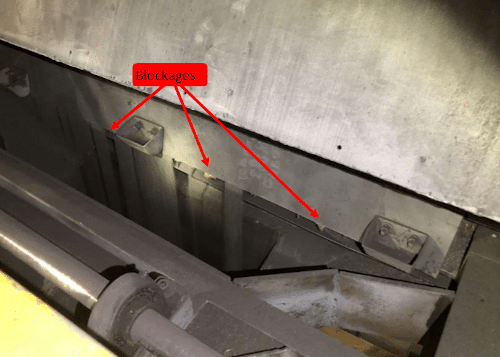
- Regular Inspections:
- Conduct regular (daily) inspections of the abrasive curtain to identify any signs of wear, gaps, or blockages. These defects can lead to inefficiencies in the separator’s performance.
- Check for any tears or holes in the curtain that could allow abrasives to escape, or air gaps, reducing the system’s cleaning effectiveness.
- Adjust the curtain as needed to ensure it provides a consistent and uniform barrier that directs abrasives correctly through the separator.
- Clearing Blockages:
- Remove any blockages caused by large particles or debris that can prevent the abrasive curtain from functioning correctly. Blockages can lead to an uneven distribution of abrasives, affecting the cleaning and preparation processes.
- Implement a routine cleaning schedule to prevent the accumulation of debris that could contribute to blockages.
- Air Flow Management:
- Monitor and maintain the air flow through the separator. The correct air flow ensures that the abrasive particles are lifted and directed as needed while allowing waste materials and dust to be expelled from the system.
- Adjust the air flow settings if you notice a decrease in separation efficiency, which could be indicative of issues with the abrasive curtain or other related components.
Discover more tips from Chris Prouty to unlock the full potential of your airwash separator
Well maintained abrasive curtain
The Importance of a regular Airwash Separator maintenance
Conclusion
Maintaining your air wash separator system is not just a routine; it’s a crucial investment in the efficiency, safety, and longevity of your operations and blasting equipment. By addressing the challenges of accessibility and regular upkeep, you ensure that your equipment runs at its best, removes unwanted dust, fines and large particles, reducing costs and enhancing productivity. Prioritize separator maintenance to avoid the pitfalls of neglect and keep your operations smooth and uninterrupted.
Discover Winoa Maintenance & Repair services
Co-Written by :
Chris Prouty
Technical Service Advisor, NAO
Chris.Prouty@winoa.com
USA: (682) 300-1885
and
Iann Bouchard, Eng
Marketing communication director
iann.bouchard@winoa.com
EU: (06) 76 33 55 13

